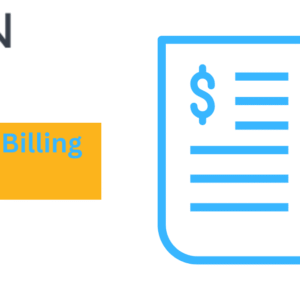The cryptocurrency market is continuously evolving, and with every passing year, new opportunities arise for innovators and developers. Altcoins cryptocurrencies other than Bitcoin have become a crucial part of the blockchain ecosystem. They bring unique features, serve niche markets, or improve upon Bitcoin’s perceived shortcomings. If you are an aspiring blockchain developer or entrepreneur, creating your own altcoin in 2025 can be a rewarding and potentially lucrative endeavor. This comprehensive guide will walk you through the essential steps, considerations, and technical aspects involved in developing your own altcoin in 2025.
Understanding What an Altcoin Is
Before diving into development, it’s crucial to understand what exactly an altcoin is. The term “altcoin” stands for alternative coin, meaning any cryptocurrency that is not Bitcoin. Altcoins can be forks of Bitcoin with some modifications or completely new blockchains with unique protocols. Altcoins serve many purposes: some aim to improve transaction speeds, others focus on privacy, smart contracts, decentralized finance (DeFi), or even specialized use cases like gaming or supply chain management. Defining the purpose of your altcoin early on will shape its development and adoption strategy.
Research the Current Crypto Landscape and Trends
2025 brings with it new trends in the blockchain space. Before launching an altcoin, spend significant time researching existing projects, technology stacks, consensus mechanisms, and regulatory environments. Trends such as Layer 2 scaling solutions, zero-knowledge proofs, cross-chain interoperability, and environmental sustainability are vital to consider. Understanding the competitive landscape will help you identify gaps or niches your altcoin can fill. Additionally, being aware of regulatory frameworks in your target markets will ensure your project is compliant and reduces future legal risks.
Define the Purpose and Use Case of Your Altcoin
A successful altcoin usually solves a specific problem or adds value in a unique way. Define the primary use case and utility of your coin. Is it meant for faster payments, governance in a decentralized application (dApp), powering an NFT marketplace, or rewarding network participants? Having a clear vision helps in communicating your project to potential users and investors. Moreover, the use case will influence technical decisions such as blockchain type, consensus mechanism, and tokenomics.
Choose the Blockchain Platform or Decide to Create Your Own
When developing an altcoin, you have two main options: build on an existing blockchain platform or create a new blockchain from scratch. Many projects launch tokens on established blockchains like Ethereum, Binance Smart Chain, or Solana because they offer ready-made infrastructure and developer tools. This approach allows you to create tokens compliant with standards like ERC-20 or BEP-20 quickly. Alternatively, if your altcoin requires unique features or governance models, building a custom blockchain may be preferable. Creating your own chain provides more control but requires deep technical expertise and resources.
Select the Consensus Mechanism
The consensus mechanism is fundamental to how your altcoin operates and validates transactions. Popular mechanisms include Proof of Work (PoW), Proof of Stake (PoS), Delegated Proof of Stake (DPoS), Proof of Authority (PoA), and newer models like Proof of History (PoH). In 2025, the industry continues moving toward energy-efficient models such as PoS due to increasing environmental concerns. Your choice impacts security, scalability, decentralization, and energy consumption. Choose a consensus model aligned with your altcoin’s goals.
Design Your Altcoin’s Tokenomics
Tokenomics refers to the economic design of your cryptocurrency, including total supply, distribution model, inflation rate, rewards, and utility. A well-crafted tokenomics model incentivizes participation, ensures liquidity, and promotes long-term sustainability. Decide on whether your coin will have a fixed supply like Bitcoin or an inflationary model. Consider vesting periods for team tokens, mechanisms for burning coins, staking rewards, or transaction fees. These factors influence user behavior and market perception.
Develop the Blockchain or Token Code
Once the groundwork is done, you begin the actual development. If creating a token on an existing blockchain, use smart contracts written in Solidity, Rust, or other supported languages to define your token’s behavior. For a custom blockchain, development involves setting up nodes, defining consensus rules, and building APIs for interaction. Open-source blockchain frameworks like Cosmos SDK, Substrate (Polkadot), or Tendermint can accelerate this process. Security is paramount audit your code thoroughly to prevent vulnerabilities that could lead to hacks or exploits.
Set Up the Network Infrastructure
For custom blockchains, you’ll need to set up network infrastructure, including nodes and validators, that maintain the blockchain. Decide whether your network will be permissioned (restricted access) or permissionless (open to anyone). You might start with a testnet environment where developers can test transactions and features before launching the mainnet. Proper infrastructure setup ensures network reliability, scalability, and uptime.
Create a Wallet for Your Altcoin
Users will need wallets to store, send, and receive your altcoin. Develop a secure and user-friendly wallet compatible with your blockchain or token standard. Wallets can be desktop, mobile, web-based, or hardware solutions. You might integrate your altcoin with popular wallets like MetaMask or Trust Wallet if it is an ERC-20 or BEP-20 token. Security features such as seed phrases, private key encryption, and multi-signature support are crucial.
Launch a Testnet and Perform Rigorous Testing
Before going live, launch a testnet a replica of the main network used for development and testing. Testing helps identify bugs, performance issues, or security flaws in a controlled environment. Engage with a community of developers and testers to report problems and suggest improvements. This phase is critical to ensure your altcoin works as intended under various scenarios.
Plan and Execute Your Mainnet Launch
After successful testing, plan your mainnet launch the official release of your blockchain or token to the public. Coordinate with exchanges, wallets, and community members for smooth onboarding. Provide clear documentation and support channels for users. Monitor the network closely in the initial days for any unexpected issues and be prepared for quick updates or fixes.
List Your Altcoin on Exchanges
To gain liquidity and exposure, list your altcoin on cryptocurrency exchanges. Start with decentralized exchanges (DEXs) like Uniswap or PancakeSwap for tokens on Ethereum or Binance Smart Chain. Later, approach centralized exchanges (CEXs) for listings, which may require meeting certain criteria and fees. Exchange listings are essential for enabling trading and growing your user base.
Build and Engage a Community
Community is the backbone of any cryptocurrency project. Use social media, forums, and messaging platforms like Telegram and Discord to engage users, gather feedback, and spread awareness. Host AMA sessions, giveaways, and partnerships to incentivize adoption. Transparent and regular communication fosters trust and helps your altcoin thrive.
Ensure Compliance with Regulations
The regulatory environment for cryptocurrencies is evolving rapidly worldwide. Ensure your altcoin complies with laws related to securities, anti-money laundering (AML), and know your customer (KYC) policies. Consult legal experts to navigate jurisdiction-specific requirements and avoid future legal issues. Compliance boosts investor confidence and long-term viability.
Plan for Future Upgrades and Governance
Blockchain projects benefit from ongoing development and upgrades. Design a governance model that allows stakeholders to propose and vote on changes. Whether through on-chain voting or off-chain mechanisms, involving the community in decisions ensures your altcoin adapts to market needs and technological advances.
Promote Your Altcoin Through Marketing
A robust marketing strategy is key to driving adoption. Use content marketing, influencer partnerships, PR campaigns, and targeted ads to reach your audience.Highlight your altcoin’s unique features, use cases, and roadmap milestones. Marketing efforts should align with community engagement to maintain momentum.
Monitor Performance and Analytics
Once your altcoin is live, continuously monitor its performance using blockchain explorers and analytics tools. Track transaction volume, active addresses, node distribution, and network health. Analyzing data helps identify bottlenecks, security threats, and user behavior, guiding future improvements and strategic decisions.
Collaborate and Form Strategic Partnerships
Partnerships with other blockchain projects, businesses, or development firms can boost your altcoin’s utility and reach. Integrate with dApps, wallets, or DeFi platforms to expand use cases. Collaborations also enhance credibility and open new growth opportunities.
Consider Environmental Impact and Sustainability
In 2025, the environmental impact of blockchain is under intense scrutiny. Designing your altcoin development with energy-efficient consensus mechanisms or carbon offset initiatives appeals to environmentally conscious users and regulators. Sustainability is increasingly a factor in investor and user decisions, making it a smart strategic priority.
Conclusion
Developing your own altcoin in 2025 is an ambitious but achievable goal with the right approach, tools, and community support. From defining your use case to coding, testing, launching, and marketing, each step requires careful planning and execution.
By focusing on innovation, security, compliance, and user engagement, you can create an altcoin that stands out and contributes meaningfully to the blockchain ecosystem. Whether you choose to build on existing platforms or develop your own blockchain, 2025 is ripe with opportunities for creative and impactful altcoin projects.



